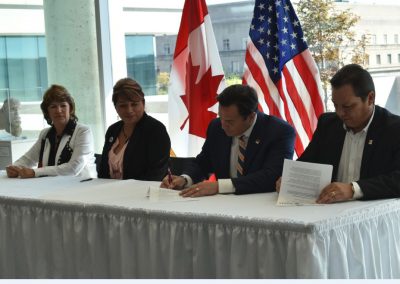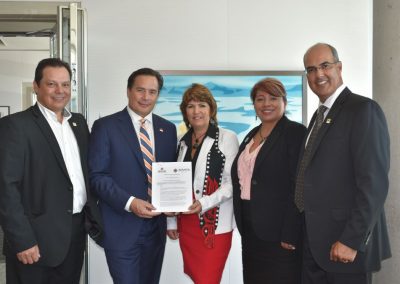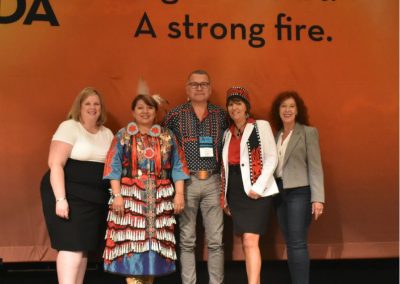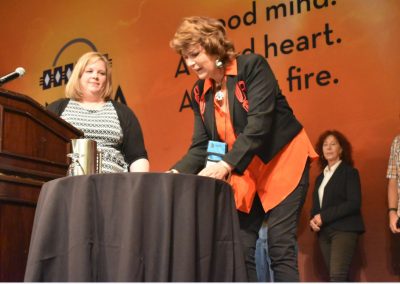Celebrating New Partnerships
AIANTA and ATAC Sign MOU in Washington D.C.
On September 7, the Aboriginal Tourism Association of Canada (ATAC) signed a Memorandum of Understanding with the American Indian Alaska Native Tourism Association (AIANTA), with the purpose of establishing a framework for cooperation between the two associations – and Canada and the United States.
The MOU intends to further enhance collaboration opportunities between AIANTA and ATAC; enrich understanding, education and cultural exchange among the members; offer business development and cultural education opportunities for the members; and support the long-term economic viability of tribal communities and each tribal member through collaboration efforts. Jointly, it will increase tourism Native American and Aboriginal Canadian tourism.
“This is an exceptional advancement for tribes throughout both the United States and Canada,” says Camille Ferguson, AIANTA Executive Director. “Both AIANTA and ATAC work to protect and sustain native cultures, economies, and communities through tourism. This new partnership economically benefits both organizations and countries through coordination and cooperation in the development, conservation, management, and promotion of tribal and aboriginal tourism.”

The MOU was signed by AIANTA and ATAC leadership in Washington D.C. at the Embassy of Canada, during an event celebrating the solidification of this new partnership. Representatives from ATAC, aboriginal Canada, AIANTA, Native America, U.S. federal partners and the national tourism industry were all present to witness the landmark MOU signing.
AIANTA was happy to kick off the great partnership with ATAC, inviting Keith Henry, ATAC President and CEO to speak at the 19th annual American Indian Tourism Conference in Green Bay immediately following the celebration in Washington D.C. Mr. Henry gave great insight to AITC attendees on ATAC’s support of the tourism marketplace and how to meet the visitor demands for authentic, meaningful experiences while travelling in Canada.
The ATAC five-year plan is designed to respond to growing visitor demands through development and marketing of authentic Aboriginal experiences that are market/export-ready delivering a meaningful and memorable experience to travelers to Canada.
AIANTA looks forward to the many projects and collaborations to come!
AIANTA and BLM Sign LOI during American Indian Tourism Conference
On September 13, during the American Indian Tourism Conference in Green Bay, the Bureau of Land Management and AIANTA signed a Letter of Intent (LOI) to continue and further their work in promoting tribal tourism on federal and tribal lands.
“I am personally, very excited about our Letter of Intent (LOI). AIANTA and BLM have a long and productive history of collaboration. It’s just makes good sense to formalize and highlight that relationship with this LOI as we mutually work to enhance tourism, travel, and recreation on Federal and tribal lands, while working with our local communities. I think that an increased focus on expanding heritage and cultural tourism opportunities in the United States is both timely, and highly beneficial to both our visitors’ experience and the destinations they choose to spend time with,” said Angela West, National Director Tourism & Community Service at Bureau of Land Management
In 2016, the NATIVE Act was passed to enhance and integrate Native American tourism, empower Native American communities, increase coordination and collaboration between Federal tourism assets, and expand heritage and cultural tourism opportunities in the United States.
This LOI and the partnership thereunder, is meant to document that AIANTA and the BLM have the intention to strengthen collaboration and coordination related to travel and tourism on Federal and tribal lands in the United States.
Through this LOI, both organizations plan to zero in on collaborative work that has begun and that can be done in the future to further the goals set out in the NATIVE Act – including traditional place names projects, education and training for tribes on BLM sites, tribal interpretation development on BLM lands and more.



